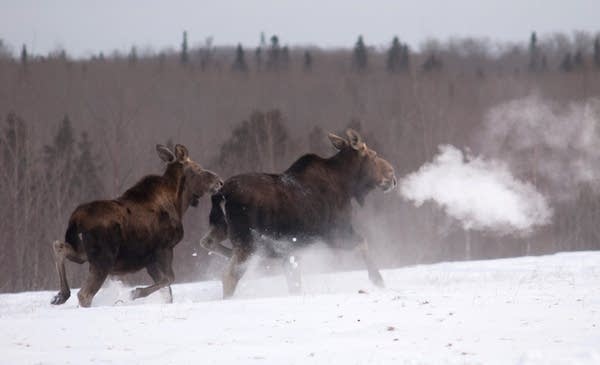Stable numbers, but Minnesota's moose are not out of the woods

Go Deeper.
Create an account or log in to save stories.
Like this?
Thanks for liking this story! We have added it to a list of your favorite stories.
Minnesota's moose population remains stable but still low, with no signs yet of a turnaround. Those are the key findings from the latest annual survey of move in northeastern Minnesota.
Researchers estimated 3,030 moose in northeastern Minnesota in early- to mid-January, statistically unchanged from last year's estimate of 3,710, the state Department of Natural Resources said Thursday.
The DNR acknowledged it can't count every single creature across 6,000 square miles but said it was confident the population is between 4,140 and 2,320 moose.
While officials were thankful for the stability, they conceded there were no signs of a rebound in the moose population.
Turn Up Your Support
MPR News helps you turn down the noise and build shared understanding. Turn up your support for this public resource and keep trusted journalism accessible to all.
"The stability of moose numbers in recent years provides a reason for some optimism. We're no facing a significant decline," Glenn DelGiudice, the DNR's moose and deer project leader, said in a statement. "But this year's results would be more palatable had they reflected the beginning of a turnaround in the population trend."
The DNR each year compares its estimates to 2006, when the agency estimated 8,840 moose in the region, the state's highest moose population estimate. Right now, northeastern Minnesota's moose population is estimated to be 65 percent lower than that peak.
"Our field research has shown that annual pregnancy rates of adult females in this population have been robust," DelGiudice said. "But it is a challenge to maintain a high number of adult females that can become pregnant, produce calves and rear them to 1 year of age."
Survey results also indicate that calf survival to January has been relatively stable, but consistently low, the DNR added, noting that its investigation show wolves account for about two-thirds of the calf deaths compared to one-third of the adult mortality.


